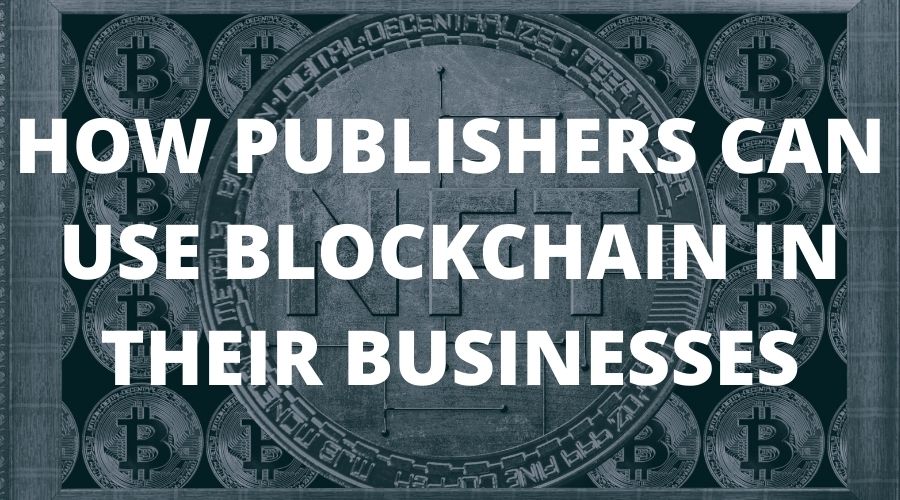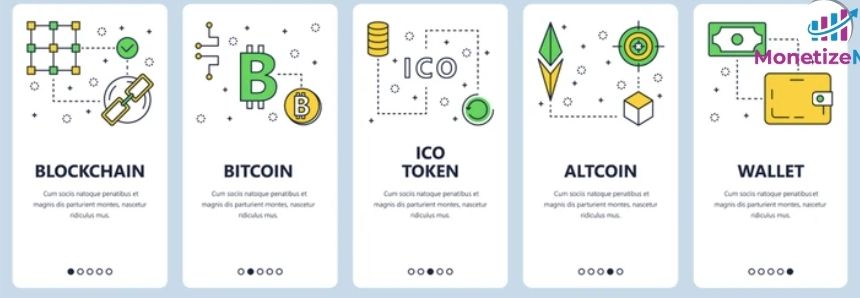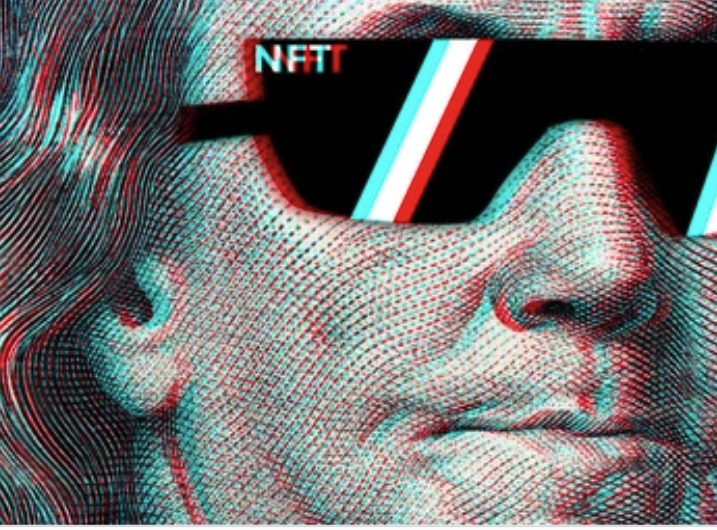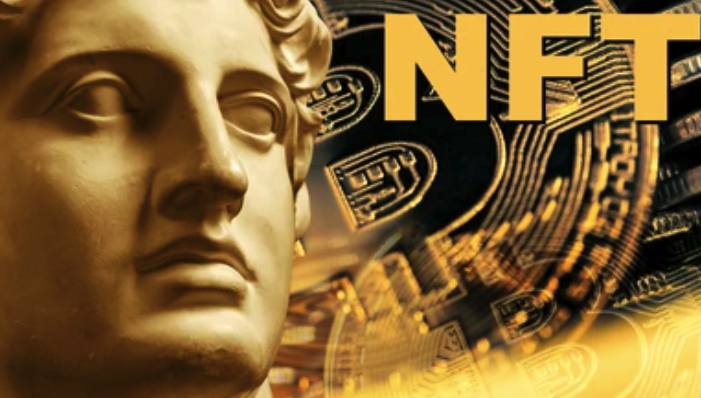
This post was most recently updated on October 24th, 2023
Everyone in 2021 has been talking about Blockchain but it is still a mystical part of the internet to many publishers and advertising executives, separate from where they do business.
Currently, blockchain technology is vastly used by companies to make money, improve business processes, & reach new audiences & potential leads.
Besides knowing that blockchain is the technology behind non-fungible tokens (NFTs) – like digitized versions of magazine covers sold for 4 figure incomes in cryptocurrency – you may not realize how the blockchain can benefit, & possibly expand your media business.
NFTs are getting more demystified, publishers need to consider holding their cryptocurrencies on their balance sheets.
Since blockchain is woven into the way companies do business; understanding how it works even at a higher level will help the industry become more proactive & perceptive to these innovations in the coming years, thereby improving revenue diversification & growth opportunities for all.
What I am trying to say here is that the countless revenue possibilities from both publishers’ & marketers’ blockchain experimentations aren’t solely limited to trading NFTs to the highest bidder.
Blockchain technology can resolve many of the inadequacies and problems publishers have in regards to the state of dealing with the media, marketing, and advertising industries and the way they conduct business – if they are willing to experiment.
Still, need to get facts straightened about blockchain? This blog post is all you need.
Blockchain is the decentralized system for verifying, authenticating, & recording digital transactions in peer-to-peer networks.
By decentralized, it means that it is not being controlled by a single institution or authority.
It was initially developed as the foundation for Bitcoin. Currently, Blockchain is used in multiple other functions.
Consensus Algorithm: A method that allows for the legitimizing and verifying blockchain transactions.
NFT aka ‘non-fungible token’: A digital certificate stating that you own the OG inimitable digital product (art, gift, sounds, etc)
Metaverse: A digital gamified version of the physical world. For instance, Something like Fortnite video games but on a broader scale.
Wallet: Stores your cryptocurrency and NFTs online which can be accessed easily across an array of apps & websites.
Utility Token: Similar to virtual currencies or loyalty/reward points used in video games, a type of cryptocurrency used internally within a particular company or in the metaverse.
Security Token: A cryptocurrency token like Ethereum that gains or loses value when users buy or sell the respective tokens.
Proof of work: It is like a Consensus algorithm that relies on a network of computers, or “nodes,” to run, record, authenticate and verify bitcoin transactions & mine new cryptocurrency coins.

Blockchain is an attractive opportunity for publishers looking to continually diversify their revenue.
You must be wondering how blockchain (NFTs and cryptocurrencies included) can help publishers innovate & amplify their marketing strategies.
This is how:

Publishers have started allowing their readers to pay for monthly/quarterly/yearly subscriptions with more than 30+ crypto options.
The subscription model will be directly proportional to the coins’ value. If the coins’ value increases so does the value of their subscription business model.
For instance, Time Magazine was the first to start taking payments in bitcoin.
Bitcoin and Etherium are currently the most expensive & popular cryptocurrencies in the blockchain market.
The amount earned from brand deals and advertising campaigns can also increase as the value of the crypto-coin increases (or decreases).

In most cases, publishers experiencing success with blockchain are selling NFTs as collectibles, or limited-edition content that has often been produced in collaboration with an external third party.
Some publishers have found success implementing the ‘Drop Model’ in which several NFTs are dropped at once to spark demand & impulsive purchasing behavior from the audience.
Newspapers like USA Today tried their luck with NFTs with a historical moment from its history to promote the same to potential buyers.
It published a newspaper called the “1st Newspaper Delivered to the Moon,” which contained 300 photographs, illustrations, and front pages related to space from the past five decades.
With these photographs, they recreated the cover of the O.G newspaper shot to the moon in 1971.
This NFT was sold for more than $8000.
Few high-performing NFTs valued at over $100,000 were sold by publishers like Bleacher Report.
You can be the next 6 figure NFT trading publisher too.

The goal is to get a consistent revenue flow from trading NFTs.
In secondary markets, the smart contracts that NFTs are based on can have wordings that allow developers to earn loyalty points on any upcoming sales of the NFT.
NFTs can be built on smart contracts which include clauses that allow creators to earn a royalty on any future sales of NFTs in secondary or tertiary markets.
For instance, let’s say a publisher tries to release a limited-edition T-shirt in its online store for $100. He/she would only be able to cash out from that initial selling price.
However, limited edition products can be resold later for a higher price point by the buyer later.
NFTs of a digital version of the limited edition tee, however, can be tracked at every point of purchase and sale.
Publishers can include language in their smart contract that automatically pays the publisher a percentage of the sale price, so the company continues to earn money from the asset long after it has left the company’s ownership.
You can integrate this later into your NFT strategy without disclosing the percentage earned.

NFT’s next iteration of strategy will be to use membership exclusives or community-building items of these digital assets.
NFT holders can be given exclusive access to events or content, as well as rewarded for engaging with the publication and participating in its decisions.
You can use NFTs to access content instead of selling a $500 subscription a year.
For readers having their crypto wallets linked to the site directly, the NFTs they hold can give them access to content without the need to log in at all times.
By holding NFTs, holders can influence how a company runs or what content is published, almost like owning stocks.
Also, acquire rewards on the side for engaging with the publications & being devoted regular readers.
Governance tokens can exist as NFTs or utility currencies that are purchased or mutually shared by users.
By voting on what content can be published or how the company evolves, superfans can voice their opinions.
Publishers determine how much influence token owners receive, but the token owners feel like they have a larger voice in the publication they love.
Decrypt, a blockchain publisher recently launched a ‘rewards token’ that offers engagement with the brand (reading, commenting, & sharing content through its exclusive app).
The readers get tokens in exchange for each action that they could later trade for prizes.
By giving these token holders a voice, Decrypt has shifted its in-house cryptocurrency into a governance token as well.

It is important to decide what the NFT will contain once you decide to mint one, whether it is for a membership or a collectible.
If you are planning to use images, gifs, or videos, always ensure you own the copyright as well.
The Copyright law applies to both NFTs and blockchain.
The copyrighted materials you see on the blockchain are still owned by the entity or person whose name appears on them, no matter how decentralized the blockchain may be.
You can keep your IP rights aka copyright ownership. (this doesn’t need to be included in the NFT smart contract.)
The blockchain smart contract can give publishers more control over how their content can be used, shared, or monetized since each step is tracked in this case.
It is common for larger publications to give smaller publications access to their content in exchange for a share of their revenue.
Although, it can be challenging to track exactly how a deal’s content is used or how much money is made from it after the initial agreement.
The basic blockchain application will incorporate language within the original syndication deal that tracks the content’s location, what ads are placed on it, and what commerce tie-ins exist.
Based on that data, the original publisher will know how much money he or she can make from one piece of content.
Though there has not been a complete implementation of this business model, this is an option for future blockchain applications in the media industry.
A considerable potential use case for the blockchain in the media landscape is how it can be used as a third-party cookie solution for ad-targeting in a privacy-compliant manner.
Instead of solely relying on 1st-party data collected by your marketers, blockchain and NFTs can enable publishers to instantly collect stats from readers themselves in exchange for cryptocurrency.
In such scenarios, the advertiser offers micropayments of crypto coins to the reader in exchange for their personal information (age, address, hobbies, etc.)
Try introducing your audiences to the cryptocurrency micropayments system in exchange for their data as much as possible so that they become comfortable later on when it comes to sharing their details like interests, etc.
If things go as planned, this will lead to mini incremental crypto payments that in the long haul will lead to bigger bucks (Cha-ching 💰!)

Always stay a step ahead of the game and shield yourself from people willing to take advantage of their gains.
Control your shiny object syndrome issues especially in the blockchain world.
Both media companies & individuals are minting quick cash on NFT sales & cryptocurrency investments.
Although they look appealing at first glance, scammers are out to get cryptocurrency and NFT owners even in the decentralized territory.
Always take exaggerated sales pitches with a grain of salt. Double-check before making any crypto transactions or investments.
As of now, media companies and publishers are at the first level of the blockchain revolution.
The algorithms & programs used in blockchain applications are still underdeveloped and evolving and we all are still rookies when it comes to adopting blockchain-based technologies.
Try viewing the concepts shared in this blog post as goal-posts for what the future holds.

With over seven years at the forefront of programmatic advertising, Aleesha is a renowned Ad-Tech expert, blending innovative strategies with cutting-edge technology. Her insights have reshaped programmatic advertising, leading to groundbreaking campaigns and 10X ROI increases for publishers and global brands. She believes in setting new standards in dynamic ad targeting and optimization.

Paid to Publishers
Ad Requests Monthly
Happy Publishers
10X your ad revenue with our award-winning solutions.